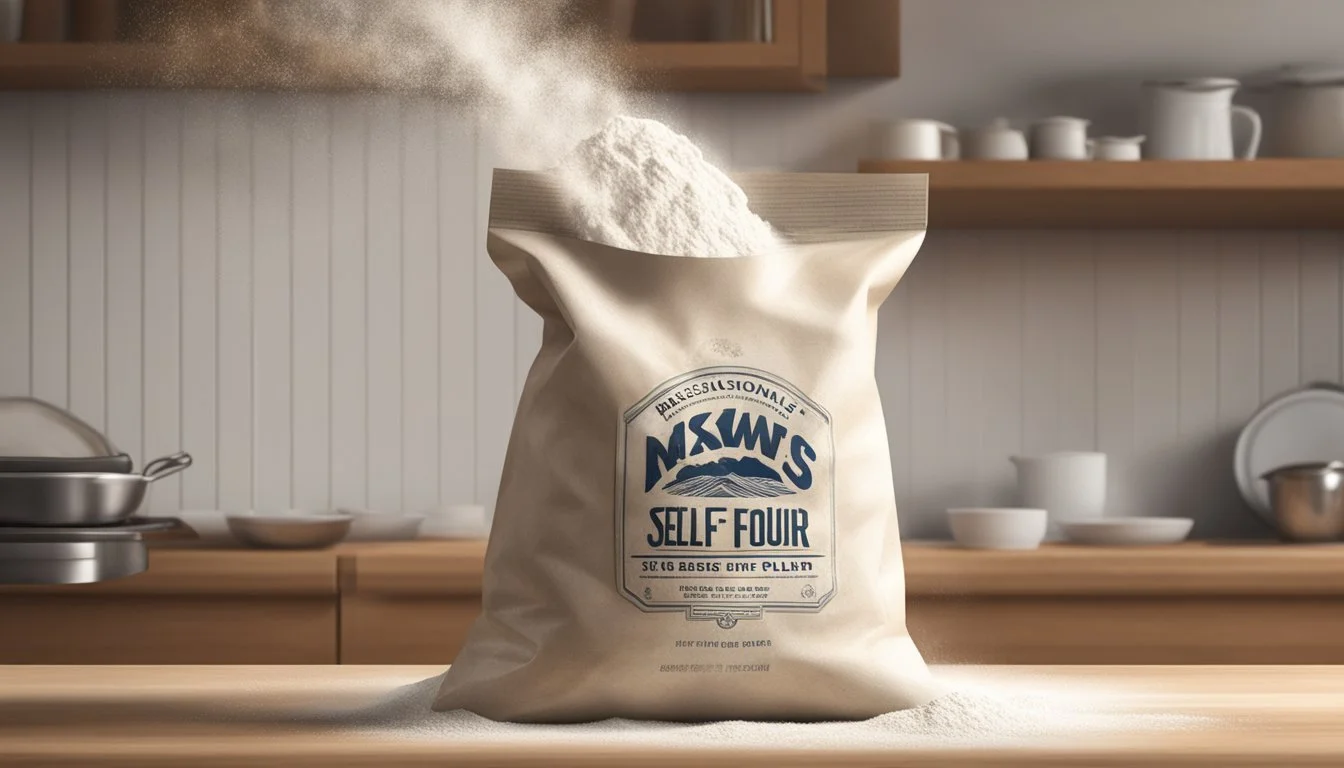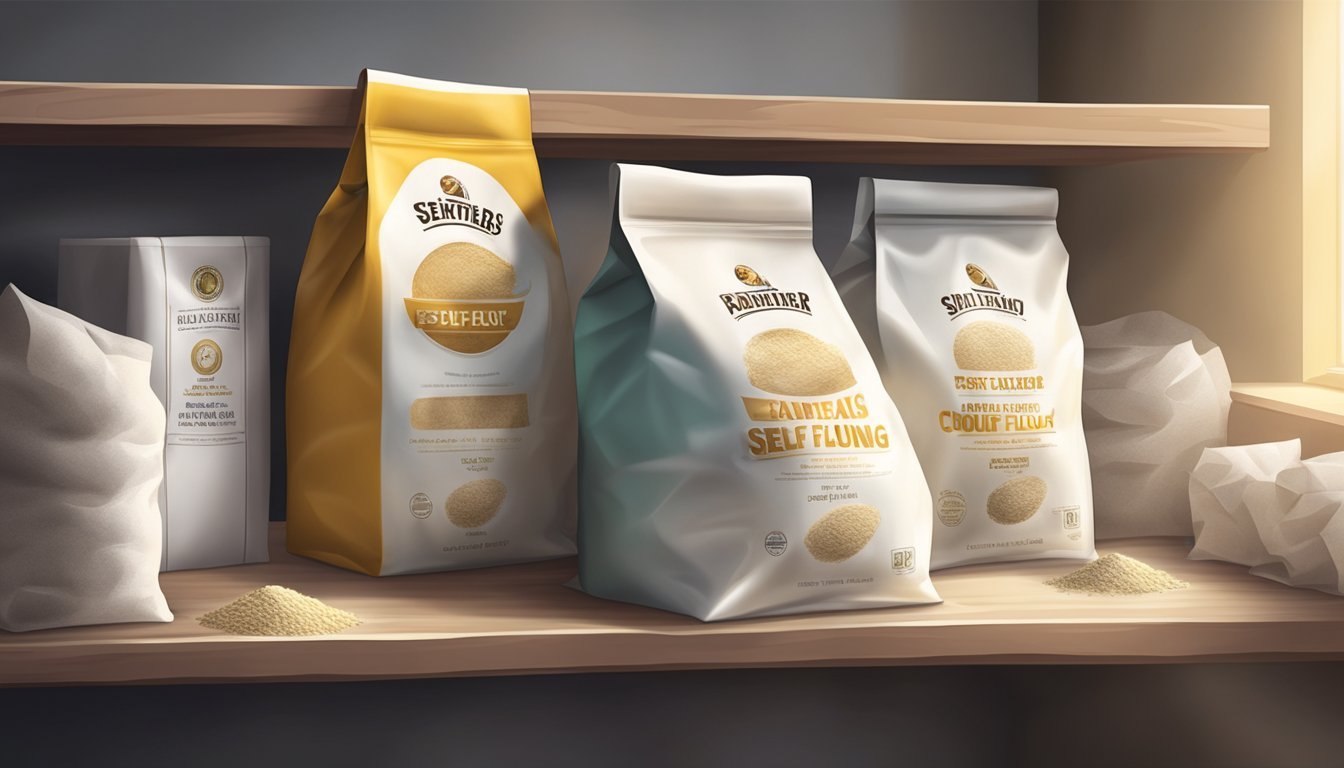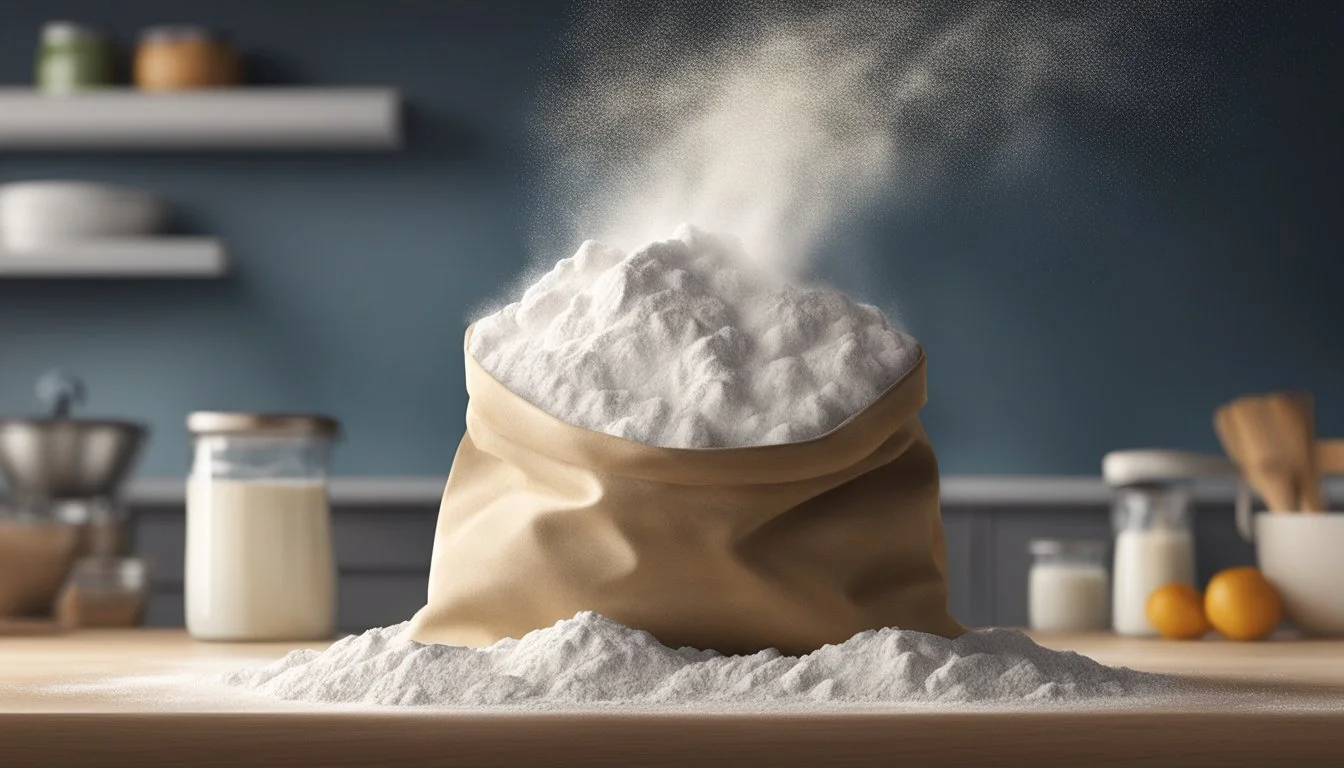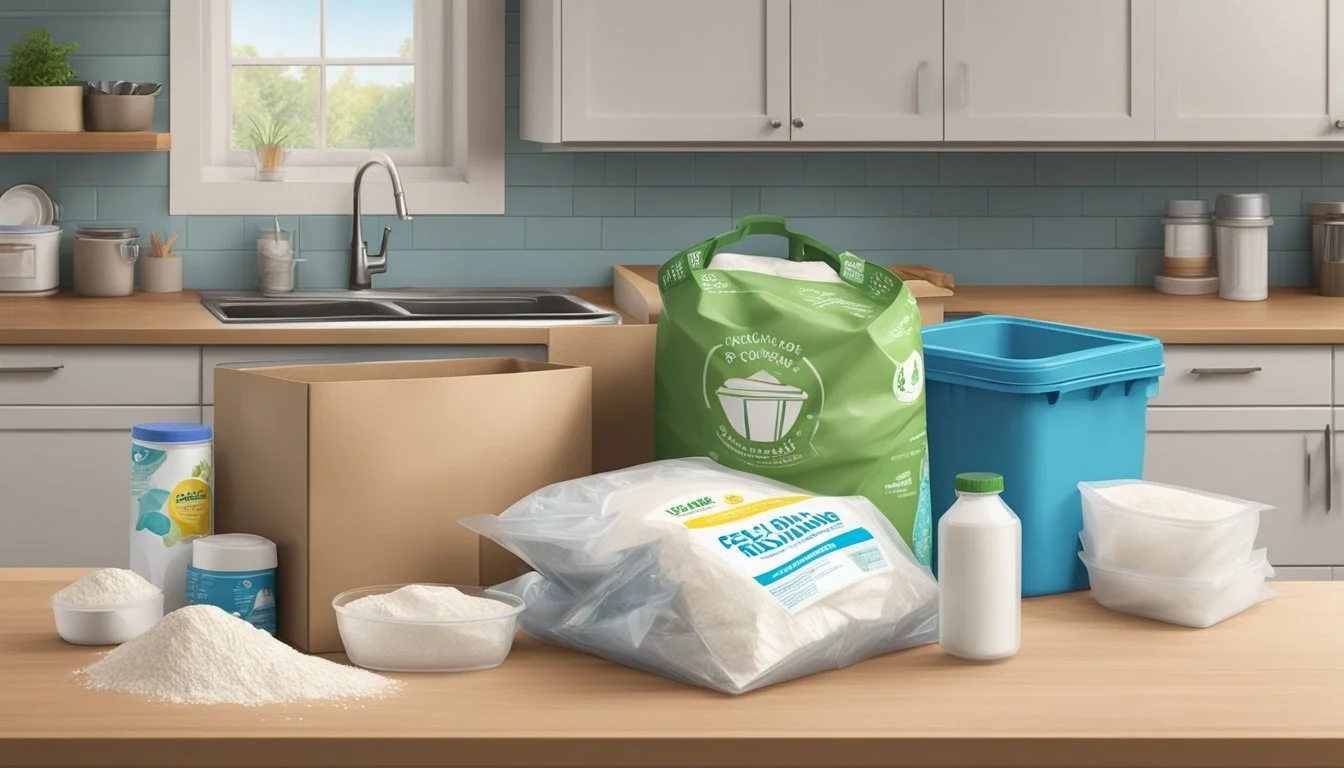Does Self-Rising Flour Go Bad?
Shelf Life and Storage Tips
Self-rising flour, a common pantry staple for many bakers, combines all-purpose flour with baking powder and salt. While self-rising flour doesn't "go bad" in the sense of becoming harmful, its leavening agent can lose potency over time, affecting your baking results. This loss of effectiveness typically occurs if the flour is stored improperly or kept for too long.
Proper storage is crucial for maintaining the quality of self-rising flour. Moisture, exposure to air, and pests can all speed up its deterioration. If your self-rising flour has an off smell, contains clumps, or shows signs of mold, it's time to throw it out.
For the best results, store self-rising flour in a sealed container at room temperature for up to 3 months, or extend its shelf life to 6 months by refrigerating it. Understanding these key points ensures your baked goods will rise as expected and maintain their intended taste and texture.
Understanding Self-Rising Flour
Self-rising flour is a versatile ingredient commonly used in baking. Its composition includes essential leavening agents that help doughs and batters rise without additional ingredients.
Composition and Leavening Agents
Self-rising flour combines all-purpose flour with specific leavening agents for convenience. The flour mixture typically includes baking powder and salt. Baking powder acts as the primary leavening agent, releasing carbon dioxide when hydrated and heated, which helps baked goods rise. The salt enhances flavor and contributes to the structure of the final product.
This blend ensures consistent results in recipes, eliminating the need for additional leavening or seasoning. For anyone looking to make self-rising flour at home, a simple mix involves 1 cup (120g) of all-purpose flour, 1 1/2 teaspoons of baking powder, and 1/4 teaspoon of salt.
Comparing Flours
When comparing self-rising flour to other types like whole grain flour, nut flours, and gluten-free flours, several differences stand out. Whole grain flour contains all parts of the grain, offering more fiber but often requiring more leavening agents due to its denser texture. Nut flours like almond flour, lack gluten and behave differently in recipes, often needing binders.
Gluten-free flours usually combine several ingredients to mimic the properties of regular flour but require added leavening agents. In contrast, self-rising flour streamlines the baking process by incorporating these agents directly into the mix, ideal for quick breads and certain cakes.
Shelf Life and Expiration
Self-rising flour's shelf life can vary significantly based on storage conditions. It is crucial to know how to identify freshness and follow expiration date guidelines to ensure optimal baking quality.
Identifying Freshness
Fresh self-rising flour maintains its quality and texture. One way to check is through its appearance and smell.
Appearance: Look for a clean, powdery texture. Any clumping, discoloration, or presence of pests indicates spoilage.
Smell: Fresh flour has a neutral smell. A stale or sour odor suggests that it is no longer good for baking.
Key signs of expired self-rising flour include a change in texture, poor rising during baking, and an off taste in the finished products.
Expiration Date Guidelines
Self-rising flour comes with an expiration date on the label, commonly referred to as a “best-by” date.
Room Temperature: When stored in a cool, dry place, self-rising flour typically lasts 3 to 6 months past the best-by date.
Refrigeration: Storing flour in the refrigerator can extend its shelf life up to 1 year. Use airtight containers to prevent moisture absorption.
Freezing: For the longest preservation, freeze self-rising flour. Properly sealed in airtight containers, it can last up to 1 year.
Store flour based on these guidelines to maximize its shelf life while maintaining high-quality baking results.
Proper Storage Practices
Proper storage of self-rising flour is essential to maintain its quality and effectiveness. Storing it correctly can help prevent moisture, insect infestation, and degradation of its leavening agents.
Ideal Storage Conditions
Self-rising flour should be stored in an airtight container to keep out moisture and pests. Keeping it in a cool, dry place like a pantry or cupboard is crucial. Exposure to heat and humidity can cause the flour to spoil quickly. If the flour is kept in its original packaging, consider placing the package in a resealable bag to further protect it.
Avoid storing it near heat sources or in direct sunlight, as this can degrade the flour and its baking powder component. Refrigeration is another option but is often unnecessary unless you live in a particularly humid environment. If refrigerating, keep the flour in an airtight container to prevent condensation.
Extending Flour's Lifespan
To extend the lifespan of self-rising flour, you might consider freezing it. Freezing the flour can inhibit the growth of mold and pests. Ensure it's stored in an airtight container or a heavy-duty freezer bag to prevent moisture from entering.
Regularly check your flour for any signs of spoilage, such as an off smell or discoloration. Doing routine inspections can help you catch any problems early. Use flour stored in the freezer within a year and flour stored in the pantry within six months for the best results. Proper storage techniques can help you make the most of your self-rising flour, ensuring it remains effective for baking.
Signs of Spoilage
To ensure the quality and safety of self-rising flour, it is crucial to recognize the signs of spoilage including visual and olfactory indicators, as well as potential health risks.
Visual and Olfactory Indicators
Odor: Fresh self-rising flour should have a neutral or slightly nutty smell. A rancid, sour, or musty odor is a clear sign of spoilage. It indicates that the flour has gone bad and should not be used.
Color: Self-rising flour typically has a consistent light color. Any yellowing or discoloration suggests deterioration. If the flour has darkened or taken on an unusual hue, it is likely spoiled.
Texture: Clumping is another red flag. Flour should have a smooth, powdery texture. Moisture or improper storage can lead to clumps or lumps.
Presence of Bugs or Weevils: Inspect the flour for any presence of pests like bugs or weevils. These infestations not only spoil the flour but also pose health risks. Flour that shows signs of these insects should be immediately discarded.
Health Risks of Spoiled Flour
Bacteria and Mold: Spoiled flour can harbor harmful bacteria and mold. Consuming flour that has visual signs of mold, such as green or black spots, can lead to serious health issues.
Foodborne Illness: Using spoiled flour in baked goods can result in foodborne illnesses. Symptoms may include nausea, vomiting, and digestive issues. Ensuring the flour is in good condition before use is important for food safety.
Mold Growth: Mold growth in flour can produce mycotoxins, toxic compounds that can cause adverse health effects. To prevent mold growth, flour should be stored in a cool, dry place and sealed in an airtight container.
Regularly checking self-rising flour for these indicators can prevent spoilage and maintain food safety. If any of these signs are present, it is best to dispose of the flour to avoid potential health risks.
Utilizing Self-Rising Flour
Self-rising flour simplifies baking by combining all-purpose flour, baking powder, and salt. This convenience makes it a staple in recipes that require quick preparation, and it can be substituted or replaced with homemade mixes or alternative flours.
Suitable Recipes
Self-rising flour is ideal for recipes that benefit from a consistent rise and light texture. Biscuits, muffins, and quick breads are common dishes that use self-rising flour. For fluffy, high-rise biscuits, bakers often prefer self-rising flour over other flour types due to its balanced mix of leavening agents.
Cakes and pancakes also utilize self-rising flour effectively, benefiting from the predictable results. It is crucial in recipes where the rise time is short, ensuring a consistent texture and volume without additional leavening.
Alternatives and Substitutes
If you run out of self-rising flour, creating a substitute is simple. Combine 1 cup of all-purpose flour, 1 1/2 teaspoons baking powder, and 1/4 teaspoon salt to create a homemade version. This mix can replace self-rising flour in any recipe on a 1:1 basis.
In some recipes, alternative flours like whole grain or nut flours can be used but may require additional leavening agents like baking soda or baking powder to achieve the desired texture. Substituting specialized flours can bring unique flavors and nutritional profiles, but careful adjustments are necessary to maintain the integrity of the original recipe.
Mitigating Environmental Impact
Minimizing waste and ensuring safe storage conditions are essential in reducing the environmental footprint related to self-rising flour. Properly storing flour can also prevent spoilage and pest infestations.
Preventing Waste
Proper storage is key to extending the shelf life of self-rising flour. This can be achieved by keeping flour in airtight containers which protects it from moisture and pests. Storing flour in cool, dark places like a pantry also helps preserve its quality.
Check expiration dates regularly and utilize flour before it reaches its best-by date. Implement a first-in, first-out system in your pantry to use older items first. Freezing self-rising flour can extend its life up to a year, reducing waste.
Recycling flour packaging and using biodegradable storage solutions can further mitigate environmental impact. Consider donating unused, non-expired flour to food banks if it’s nearing its expiration date. These steps help ensure that flour is utilized efficiently, reducing both household waste and the demand for new products.
Pest Control and Safety
To prevent infestations from pests like weevils, store self-rising flour in airtight containers. This reduces the chance of pests entering and contaminating the flour. Spices and bay leaves can also be placed in pantries as natural repellents.
Regularly inspect storage areas for signs of pests. If spoilage or infestations are detected, discard affected flour immediately to avoid foodborne illnesses. Clean pantry shelves thoroughly to remove any pest remnants and use sealed, pest-proof containers for future storage.
Ensuring safe storage not only maintains the integrity of self-rising flour but also minimizes the risk of contamination. By adhering to these preventive measures, you can protect your ingredients and contribute to a safer, more sustainable kitchen environment.







